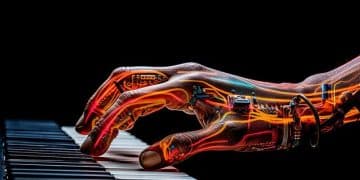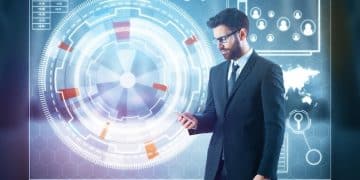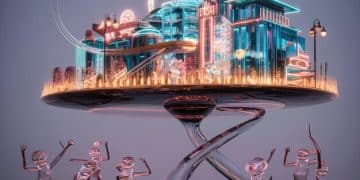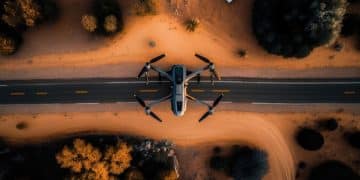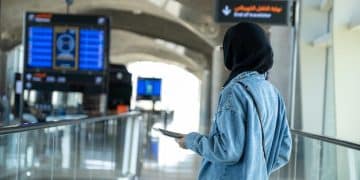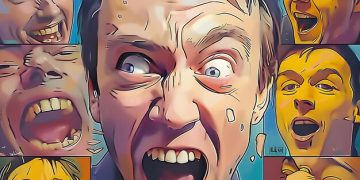AI Art in 2025: Copyright, Ethics, and the Law
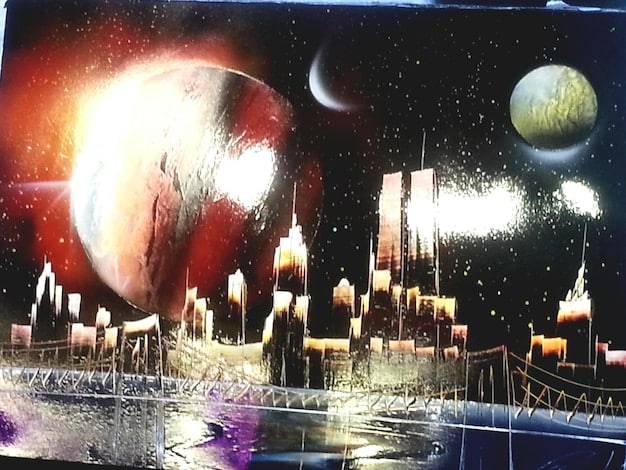
In 2025, the rise of AI-generated art presents complex challenges regarding copyright ownership, artistic integrity, and the potential displacement of human artists, necessitating updated legal frameworks and ethical guidelines to navigate this evolving landscape.
The art world is on the cusp of a revolution, driven by the rapid advancement of artificial intelligence. By 2025, the rise of AI-generated art: copyright laws and ethical implications in 2025, will be more pertinent than ever, impacting artists, legal professionals, and technology developers alike. The evolving intersection of AI and art raises crucial questions about creativity, ownership, and the very definition of art itself.
Defining AI-Generated Art in 2025
Artificial intelligence has made significant strides in recent years, and its application in art creation is no longer a futuristic concept but a present reality. Understanding what constitutes AI-generated art is the first step in addressing the legal and ethical challenges it presents.
How AI Creates Art
AI algorithms, particularly those based on neural networks, can analyze vast datasets of existing artworks to learn patterns, styles, and techniques. These AIs then use this knowledge to generate new images, paintings, sculptures, and even musical compositions. The process involves training the AI on a specific dataset and then prompting it to create something new based on that training.
Examples of AI Art Platforms
Several platforms have emerged that allow users to create art using AI. These include tools like DeepAI, Artbreeder, and Midjourney, which provide users with various options to generate unique artworks. These platforms often allow users to input text prompts, select styles, and adjust parameters to guide the AI’s creative process.

The expansion of AI art platforms is contributing to the democratization of art creation, as individuals without traditional artistic skills can now produce complex and visually appealing pieces. This accessibility, however, raises questions about the originality and authorship of such creations.
- DeepAI: Offers various AI tools for image generation, allowing users to create art from text prompts.
- Artbreeder: Enables users to “breed” images together, creating new and unique artworks through AI-driven genetic algorithms.
- Midjourney: Known for generating highly detailed and imaginative images based on user prompts, often used for creating concept art and illustrations.
In conclusion, AI-generated art represents a significant shift in the art world, challenging traditional notions of creativity and authorship. As AI technology continues to evolve, it becomes increasingly important to address the legal and ethical implications of these developments to ensure a fair and sustainable future for both human and artificial artists.
Copyright Laws and AI Art: The Current Landscape
Copyright law is designed to protect the rights of creators, ensuring they receive recognition and compensation for their work. However, applying existing copyright laws to AI-generated art presents unique challenges.
Who Owns AI-Generated Art?
One of the most pressing questions is who owns the copyright to art created by AI. The legal framework in many countries asserts that copyright can only be granted to human creators. This raises the issue of whether AI-generated art can be copyrighted at all.
The Role of the User in AI Art Creation
In many cases, users provide prompts and parameters that guide the AI’s creative process. This raises the question of whether the user can claim copyright over the AI-generated art due to their creative input. However, the extent of human intervention required to claim copyright is still a matter of debate.
Legal Precedents and Cases
There have been several legal cases involving AI-generated art, but a clear consensus has yet to emerge. Some jurisdictions have ruled that AI cannot be considered an author for copyright purposes, while others are still grappling with the issue. The lack of legal clarity creates uncertainty for artists, developers, and consumers alike.
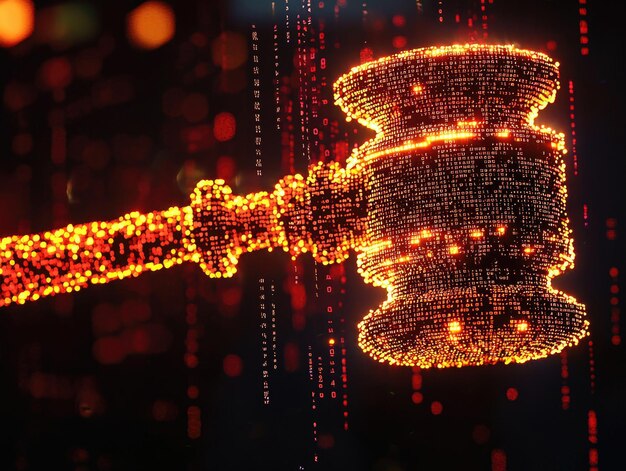
As it stands, current copyright laws are ill-equipped to handle the complexities of AI-generated art. This gap demands new interpretations and frameworks to address the unique challenges of AI authorship and ownership.
- Human Authorship Requirement: Many copyright laws require human authorship, making it difficult to assign copyright to AI-generated works.
- User Input vs. AI Output: Determining the extent of human input necessary for copyright eligibility remains a challenge.
- Lack of Legal Clarity: The absence of clear legal precedents creates uncertainty and potential disputes over ownership.
In conclusion, the current legal landscape struggles to adapt to the rise of AI-generated art. Clarifying copyright laws and establishing new legal frameworks is essential to protect the rights of all stakeholders and foster innovation in the field of AI art.
Ethical Implications of AI Art
Beyond the legal complexities, AI-generated art raises significant ethical questions. These issues concern the integrity of artistic expression, the potential for misuse, and the impact on human artists.
Artistic Integrity and Authenticity
One ethical concern is whether AI-generated art can be considered “authentic” or “original.” Since AI algorithms are trained on existing datasets, some argue that their creations are merely imitations or derivatives of human art.
Potential for Misuse and Bias
AI algorithms can inadvertently perpetuate biases present in the data they are trained on. This can lead to the creation of art that reflects discriminatory or stereotypical views. Additionally, AI-generated art could be used to create deepfakes or spread misinformation, raising concerns about its potential for misuse.
Impact on Human Artists
The rise of AI-generated art also raises questions about the future of human artists. As AI becomes more capable of creating art, there is concern that it could devalue human creativity and displace artists from their jobs.
Ethical considerations are paramount in the development and deployment of AI-generated art. Addressing issues of authenticity, bias, and potential misuse is crucial to ensure that AI art contributes positively to society.
- Authenticity Debate: The question of whether AI-generated art can be considered truly “original” or “authentic.”
- Bias Amplification: The risk of AI algorithms perpetuating biases found in their training data.
- Artist Displacement: Concerns about the potential for AI to devalue human creativity and displace artists.
In conclusion, the ethical implications of AI-generated art are multifaceted and demand careful consideration. Promoting responsible development and usage of AI art technologies is essential to mitigate potential harms and foster a creative environment that values both human and artificial contributions.
The Future of Copyright Law for AI Art in 2025
Looking ahead to 2025, it is clear that copyright law must evolve to address the unique challenges posed by AI-generated art. Several potential paths forward exist, each with its own implications.
Proposed Legal Frameworks
One approach is to create new legal frameworks specifically designed for AI-generated works. These frameworks could establish different criteria for copyright eligibility, taking into account the roles of both the AI and the human user.
International Agreements and Standards
Given the global nature of the internet, international agreements and standards are essential to ensure consistency in copyright protection for AI-generated art. These agreements could establish common principles and guidelines for AI authorship and ownership.
The Role of Technology in Copyright Enforcement
Technology can also play a role in copyright enforcement. AI-powered tools could be used to detect instances of copyright infringement in AI-generated art, helping to protect the rights of creators and prevent unauthorized use.
The future of copyright law for AI art hinges on proactive adaptation and collaboration. Establishing clear legal frameworks, fostering international cooperation, and leveraging technology for enforcement are crucial steps in navigating this evolving landscape.
- New Legal Frameworks: Developing specific laws for AI-generated art to address unique challenges in copyright eligibility.
- International Standards: Establishing global agreements for consistent protection of AI-generated art copyrights.
- Technological Enforcement: Utilizing AI tools to detect and prevent copyright infringement in AI-generated works.
In conclusion, the future of copyright law for AI-generated art requires a forward-thinking approach that balances the interests of human creators, AI developers, and the public. Proactive adaptation and international collaboration are essential to ensure a fair and sustainable legal environment for AI art.
Ethical Guidelines for AI Art in 2025
In addition to legal frameworks, ethical guidelines are needed to ensure the responsible development and use of AI-generated art. These guidelines should address issues of bias, transparency, and the impact on human artists.
Promoting Transparency in AI Art Creation
Transparency is essential for building trust in AI-generated art. Creators should disclose when AI has been used to create a work, and provide information about the AI algorithms and datasets involved. This allows viewers to make informed judgments about the authenticity and originality of the art.
Addressing Bias in AI Algorithms
Developers should take steps to mitigate bias in AI algorithms. This includes using diverse and representative datasets for training, as well as implementing techniques to detect and correct bias in AI outputs. Addressing bias is crucial to prevent the creation of art that perpetuates harmful stereotypes.
Supporting Human Artists
Ethical guidelines should also address the impact of AI-generated art on human artists. This could include providing training and support for artists to adapt to new technologies, as well as promoting policies that ensure fair compensation and recognition for human creative work.
Ethical guidelines are critical to ensure that AI-generated art contributes positively to society. Promoting transparency, addressing bias, and supporting human artists are key principles for responsible AI art development.
- Transparency: Disclosing the use of AI in art creation and providing information about the algorithms and datasets used.
- Bias Mitigation: Ensuring AI algorithms are not perpetuating harmful stereotypes through careful dataset selection and bias detection.
- Support for Artists: Providing resources for human artists to adapt to new technologies and ensuring fair compensation.
In conclusion, ethical guidelines are essential to navigate the complex moral landscape of AI-generated art. By prioritizing transparency, addressing bias, and supporting human artists, we can foster a creative environment that values both human and artificial contributions.
Case Studies: AI Art and Copyright Disputes
Real-world examples of copyright disputes involving AI-generated art can provide valuable insights into the challenges and potential solutions in this area. Examining notable cases helps illustrate the complexities of applying existing laws to AI-created works.
The “Next Rembrandt” Project
The “Next Rembrandt” project, where AI was used to create a new painting in the style of Rembrandt, sparked debate about copyright ownership. While the project was widely celebrated, it raised questions about whether the resulting artwork could be copyrighted and who would own those rights.
AI-Generated Music and Copyright
Several cases have involved music generated by AI, with disputes arising over whether the AI’s output infringed on existing copyrights. These cases often hinge on whether the AI’s creative process was sufficiently independent or whether it relied too heavily on existing musical works.
Deepfakes and Copyright Infringement
The use of AI to create deepfakes has raised concerns about copyright infringement, particularly when AI is used to mimic the likeness or style of existing artists. These cases highlight the need for clear legal standards to address unauthorized use of copyrighted material.
Analyzing case studies helps highlight the gaps in current copyright laws and the need for updated frameworks. These examples underscore the importance of addressing issues related to AI authorship, originality, and potential infringement.
- “Next Rembrandt”: Debate over copyright ownership of a painting created entirely by AI in the style of Rembrandt.
- AI Music Infringement: Disputes about AI-generated music and its potential infringement on existing copyrighted works.
- Deepfake Copyright Issues: Concerns about deepfakes using AI to mimic artists and potentially infringing on copyrights.
In conclusion, case studies of copyright disputes involving AI art offer valuable lessons for policymakers and legal professionals. Addressing the complexities of AI authorship and infringement is crucial to fostering innovation while protecting the rights of both human and artificial creators.
| Key Point | Brief Description |
|---|---|
| 🎨 Defining AI Art | Understanding AI’s role in creating art through algorithms and platforms. |
| ⚖️ Copyright Issues | Addressing who owns AI-generated art under current copyright laws. |
| 🤖 Ethical Concerns | Examining the ethical implications of AI art, including bias and authenticity. |
| 🔮 Future Trends | Exploring how copyright laws and ethical guidelines may evolve by 2025. |
Frequently Asked Questions (FAQ)
▼
Current copyright laws often require human authorship, making it challenging to copyright AI-generated art. The extent of human input needed for eligibility is still debated.
▼
Developers, users, and policymakers all share responsibility. Transparency, bias mitigation, and support for human artists are essential ethical considerations.
▼
These include copyright infringement, perpetuation of biases, devaluation of human creativity, and the spread of misinformation through deepfakes.
▼
By promoting transparency, addressing bias in algorithms, supporting human artists, and establishing clear legal and ethical guidelines.
▼
New legal frameworks specific to AI-generated works, international agreements on AI authorship, and technology-driven copyright enforcement are anticipated.
Conclusion
As we approach 2025, the rise of AI-generated art: copyright laws and ethical implications in 2025, require careful attention and proactive measures. Establishing clear legal frameworks, promoting ethical guidelines, and fostering international cooperation are crucial steps in navigating this evolving landscape and ensuring a fair and sustainable future for both human and artificial creativity. Embracing these principles will help unlock the full potential of AI art while safeguarding the rights and values of all stakeholders.
